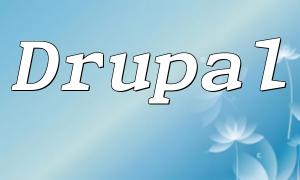RESTful APIs are an interface style based on the HTTP protocol, which separates resource identifiers from the resource state, making client-server interaction simpler. In the process of using RESTful APIs, caching plays a significant role in performance optimization. Cache control refers to the mechanism where the server instructs the client on how to cache and use the cached data by setting HTTP headers.
HTTP headers are part of HTTP requests and responses and contain information about response content, cache control, authentication, and more. In the context of RESTful API cache control, the commonly used HTTP headers include:
Cache-Control is a directive introduced in HTTP/1.1 to control caching behavior for client requests, proxy server caching, and server responses. Some common values include:
ETag is an entity tag in the HTTP response header that identifies the current state of a resource. When requesting a resource, the client sends the previously obtained ETag value via the If-None-Match header. The server compares the ETag values, and if they match, it returns a 304 Not Modified response, allowing the client to use the cached version directly.
Last-Modified is a date-time value in the HTTP response header that indicates the last modification time of the resource. When requesting a resource, the client sends the previously obtained date-time value via the If-Modified-Since header. The server compares the dates, and if they match, it returns a 304 Not Modified response, allowing the client to use the cached version directly.
In PHP, implementing RESTful API cache control can be done by setting HTTP headers.
The Cache-Control header can be set on the server using the header function. The code is as follows:
$maxAge = 600; // Cache for 600 seconds
header('Cache-Control: public, max-age=' . $maxAge);
The above code sets the Cache-Control header to public, indicating that the response can be cached by any intermediary (such as proxy servers), and the maximum cache duration is set to 600 seconds.
The ETag header can be set on the server using the header function. The code is as follows:
$etag = md5($responseBody); // Generate an entity tag based on the response content
header('ETag: ' . $etag);
The above code generates an ETag based on the response content and sets it as part of the response header.
The Last-Modified header can be set on the server using the header function. The code is as follows:
$lastModifiedTime = filemtime($filePath); // Get the file's last modified time
$lastModified = gmtdate('r', $lastModifiedTime);
header('Last-Modified: ' . $lastModified);
The above code retrieves the file's last modified time, converts it to GMT format, and sets it as part of the response header.
Cache control for RESTful APIs can significantly enhance application performance by reducing requests and responses to the server. When implementing cache control for RESTful APIs, we can use HTTP headers to instruct clients on how to cache and use cached responses. These HTTP headers, including Cache-Control, ETag, and Last-Modified, provide important information that allows the client to determine whether it can directly use a cached response.










